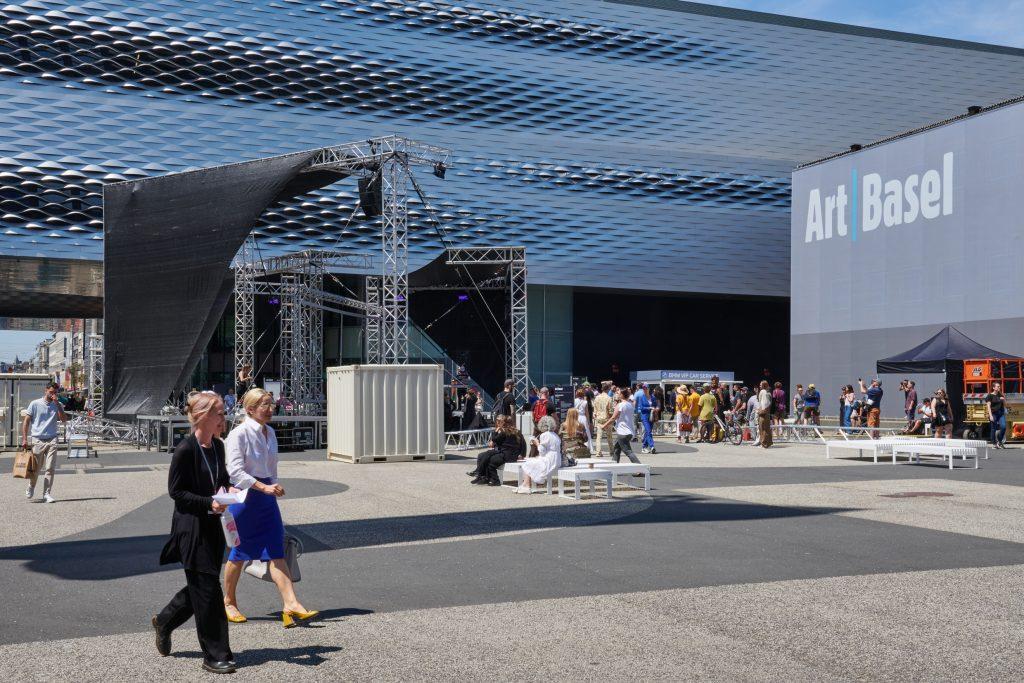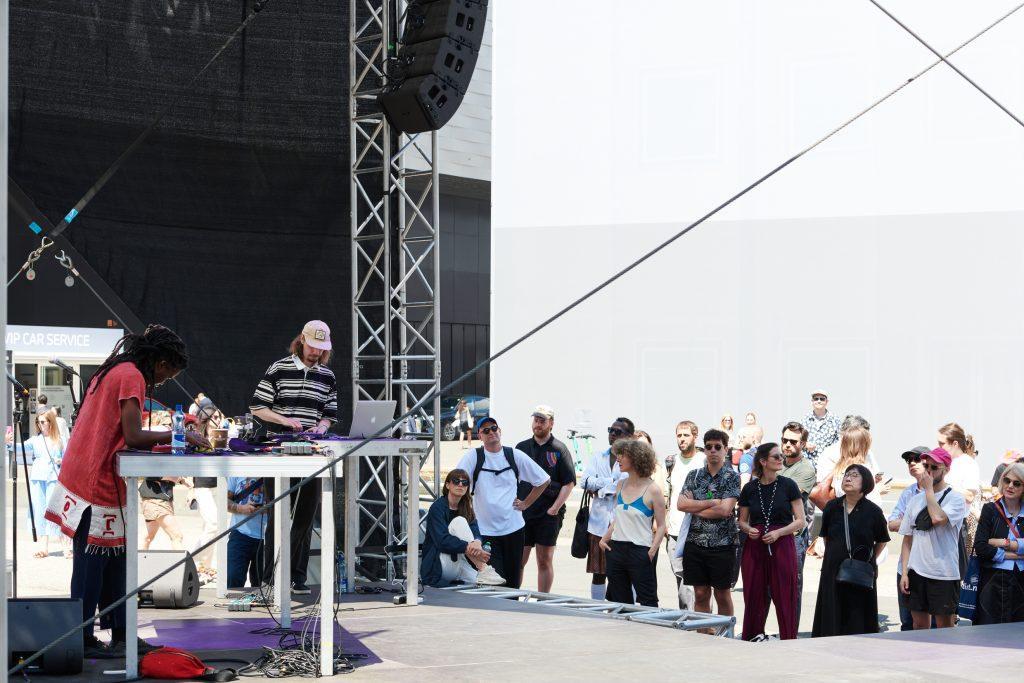(MENAFN- USA Art News) The Moroccan-Swiss artist Latifa Echakhch (b. 1974) is in high demand lately. The Venice Biennale and Art Basel in Switzerland-arguably Europe's two most preeminent art events-vigorously courted the artist for her involvement in their programming. Last year at the Biennale, Echakhch transformed the Swiss pavilion with an installation that suffused the space in an orange glow, while rubble and litter were strewn across its floors. Given the description, one might assume that Echakhch was going for a war-zone effect, but the real-life experience was quite different-festive, even.“I wanted to create the sensation of arriving at the end of an event or a ritual,” she said of the work, titled The Concert. Though the room was silent, the warmth of the light she created gave off the buzzy, warm feeling like when a concert has just ended and the room has been transformed by the energy created by the performance as well as the feeling of community it formed for its audience.

Latifa Echakhch, installation view of The Sun and the Set at BPS22, Charleroi, Belgium, in 2020. Photo: Leslie Artamonow.
This week at Art Basel, Echakhch is expanding upon the idea of a concert in more literal terms with a new site-specific series of installations on the central Messeplatz that draw from her fascination with the detritus of deconstructed stages and which will serve as the backdrop for live events through the run of the fair.“During the Venice Biennale, I stayed a lot in the back. I wanted to push more this time,” she told Artnet News over the phone during installation last week. The project doesn't have an official title, but she said that the German word“Allerplatz,” meaning“the place that belongs to everybody,” has come to mind while creating it. Through Sunday, the Messeplatz will host a program of experimental music on several stages created by Echakhch.“I am trying to analyze all these processes of musicality, rhythm, and harmony, and all these thoughts you could have around a musical idea,” she explained.

Latifa Echakhch, The Concert (2022), at the Pavilion of Switzerland during the 59th Venice Art Biennale. Photo: Vincenzo Pinto/AFP via Getty Images.
The piece is in direct conversation with Echakhch's Venice Biennale project, but, prior to these two paramount commissions, music didn't actually play much of a role in her work at all. Echakhch's sculptures are, instead, what earned the 48-year-old artist international acclaim, with Echakhch winning the Marcel Duchamp Prize in 2013, and exhibitions with the Hammer Museum, the Pinault Collection, and the Tate Modern over the past decade. Her most prominent works deconstruct materials and repurpose them to create new contexts hinting at geopolitics, cultural identity, and anthropology.

Latifa Echakhch, Der Allplatz (2023). Courtesy of Art Basel.
Though her Messeplatz work is not as materials-forward, she is continuing the practice of repurposing old materials. Her show at Kaufmann Repetto,“The After” in Milan in 2020 featured broken-down bits of a stage that she was able to incorporate into the stages in Basel, all six of which are in varying levels of disrepair or semi-completion.“One of my dreams was to make two stages that crash in the middle of the place,” she said and admitted that the musicians will have to contend with the somewhat precarious states.“It will be more fragile than a normal concert setting,” she said. Adding to the challenge for the musicians is the temporal way art viewers move through spaces-it's not a given that the audience will sit for an entire set.“That's not an easy situation for them. If [the crowd] doesn't plan to stay, they will have to captivate them,” she considered.
As for how the musicians approach her installation, Echakhch is decidedly hands-off.“I don't want to be in the center of the thing, to have my name too much on it. I wanted to be more discreet,” she explained, saying that she prefers to act more as a producer of the event than the central artist.“It started with my idea and my installation, but it's just a landscape that will welcome others. I am just the host.”

Latifa Echakhch, Der Allplatz (2023). Courtesy of Art Basel.
Echakhch did, however, orchestrate the lineup of musicians who will be performing within the installation and did so with the assistance of her partner, Luc Meier, who runs an artist residency program la becque on the shore of Lake Geneva. Many of the musicians who will perform at the Messeplatz became close to the couple during the course of their time at La Becque, and Echakhch has following much of their music for several years now.“A lot of these musicians were part of my process of reflection for my Venice Biennale project,” she said.
Among these is Rhys Chatham's Chatham Guitar Trio, who are staging performances with visual artists Robert Longo and Naama Tsabar (Longo's performance with take place along with a screening of his 2022 film. These concerts will also foreground two women cellists, Leila Bordreuil and Lucy Railton.“It's a very subtle instrument, but these two female players play in very powerful ways. It looks romantic, but when they play it, it's really strong. A woman with a cello can be so powerful!” said Echakhch.

Latifa Echakhch Der Allplatz (2023), a stage installation on the Messeplatz in Basel, June 2023. Photo: Gunnar Meier Photography.
“It moves me that Latifa, an outstanding artist of a younger generation, is interested in Rhys's and my work,” Longo told Artnet News of his excitement to perform with Rhys Chatham this week at the fair.“I've played guitar with Rhys since the late 1970s. He is an extraordinary composer. For my generation's artists, Rhys is our Philip Glass. He's brilliant. I'm sure the Swiss police will show up because we are going to be loud, very loud!”
Echakhch's musical curation for the fair is intrinsically linked to her mission to push the boundaries of the experience of a performance can be.“[These musicians] are pushing boundaries about linearity, the timeline, the way they construct their cause. They are pushing some of their instruments to their limits. They are also pushing our expectations to the limits,” noted Echakhch with satisfaction.